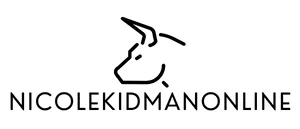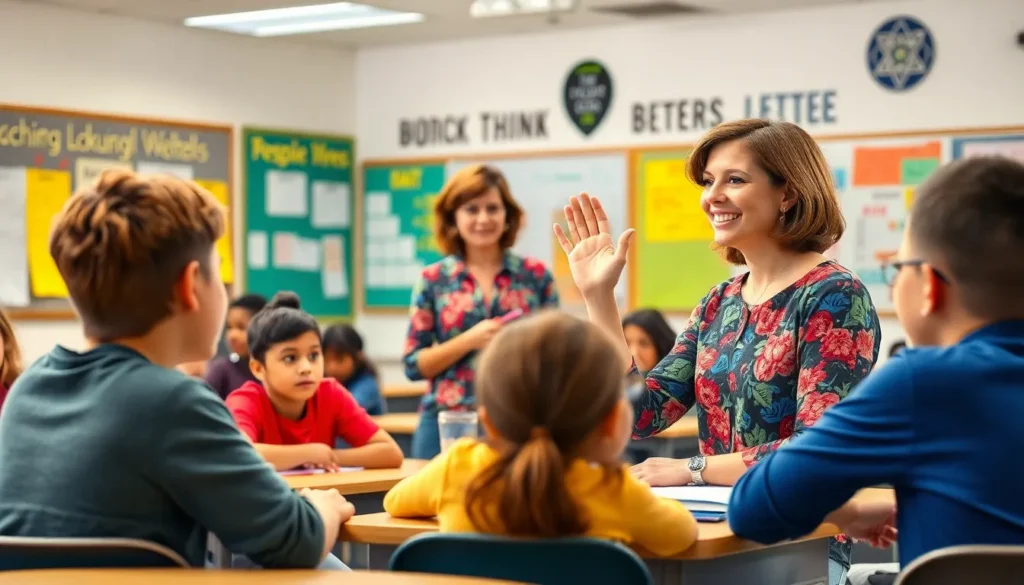Table of Contents
ToggleClassroom management can feel like juggling flaming torches while riding a unicycle—exciting but a bit chaotic. Every teacher knows that keeping students engaged and focused is a skill that goes beyond lesson plans and textbooks. It’s the secret sauce that transforms a room full of energetic minds into a productive learning environment.
Mastering the art of classroom management isn’t just about maintaining order; it’s about creating a space where students thrive. With the right strategies, teachers can turn potential disruptions into opportunities for growth. So, whether you’re a seasoned educator or just starting your teaching journey, buckle up. This guide will explore effective techniques that not only keep the peace but also make learning fun. After all, who said managing a classroom couldn’t be a little entertaining?
Understanding Classroom Management
Effective classroom management lays the foundation for a positive learning environment. Teachers can optimize student engagement and minimize disruptions through well-structured strategies.
Definition and Importance
Classroom management encompasses various practices aimed at fostering a productive learning atmosphere. It involves setting clear expectations, organizing resources, and utilizing effective communication techniques. Importance lies in its ability to promote student accountability and encourage participation. Studies show that well-managed classrooms correlate with improved academic performance and reduced behavioral issues. Additionally, an organized environment allows students to develop responsibility and respect for their peers, leading to enhanced social interactions.
Key Components of Effective Management
Components critical to effective management include routines, rules, and relationships. Routines provide predictability, giving students a framework for daily activities. Consistent rules establish boundaries, guiding student behavior and decision-making. Relationships, on the other hand, foster trust and open communication, which are vital for successful interaction. Teachers can enhance classroom dynamics by prioritizing these components, creating an environment where students feel secure and motivated. Effective management also involves ongoing assessment, enabling adjustments for diverse learning needs.
Strategies for Successful Classroom Management

Successful classroom management involves a mix of proactive and reactive strategies that help maintain a conducive learning environment. Implementing these techniques enables teachers to address challenges efficiently.
Proactive Strategies
Proactive strategies focus on preventing disruptions before they occur. Establishing clear expectations at the beginning of the school year equips students with a framework for behavior. Designing routines that students can easily follow encourages consistency. Engaging students through interactive activities maintains their interest and reduces off-task behavior. Utilizing positive reinforcement techniques, such as praise or rewards, cultivates a supportive atmosphere. A well-organized physical environment facilitates smooth transitions and minimizes distractions. Teachers often find that consistently applying these strategies results in higher student engagement and improved academic performance.
Reactive Strategies
Reactive strategies address disruptions when they happen. Responding to misbehavior promptly and fairly helps maintain authority while supporting students’ development. Engaging in calm conversations allows teachers to understand the underlying causes of a student’s actions. Implementing restorative practices fosters accountability and helps students learn from their mistakes. Each situation requires an individualized approach, adapting responses to fit the specific context. Using clear communication aids in resolving conflicts and restoring the classroom climate. Effective teachers balance reactive strategies with proactive approaches, ensuring a targeted response that reinforces positive behavior.
The Role of Teacher-Student Relationships
Teacher-student relationships significantly influence classroom management. Strong connections create an environment conducive to learning and development.
Building Trust and Respect
Trust and respect form the backbone of effective relationships in the classroom. When a teacher shows genuine interest in students, they foster an atmosphere where students feel safe to express themselves. Students respond positively to clear expectations and consistent behavior from teachers. Trust encourages open communication, enabling students to seek help and participate actively. Furthermore, modeling respectful behavior sets the standard for students. Establishing routines helps create predictability, essential for building trust. Trust strengthens relationships and promotes a more cooperative classroom environment.
Encouraging Student Engagement
Engaging students directly impacts their learning experience. Teachers can enhance engagement by incorporating interactive activities aligned with students’ interests. Group discussions or hands-on projects allow students to contribute and collaborate, fostering a sense of community. Encouraging questions and valuing student input boosts their confidence, making them feel integral to the learning process. Teachers can utilize varied teaching techniques to cater to diverse learning styles, which keeps students attentive and invested. By maintaining a dynamic classroom atmosphere, teachers help students take ownership of their learning and cultivate a motivation to succeed.
Challenges in Classroom Management
Classroom management presents unique challenges that educators face daily. Successfully navigating these obstacles requires identifying common issues and employing effective strategies.
Common Issues Faced by Educators
Disruptive behavior frequently undermines classroom dynamics. Students may act out due to various reasons, such as lack of engagement or personal issues. Unclear expectations often leave students unsure of acceptable behavior. Additionally, diverse learning needs complicate the classroom environment, demanding tailored approaches to keep all students engaged. Limited resources can hinder the ability to implement effective strategies further impacting student learning. Variation in student motivation also presents a challenge. When students lack intrinsic motivation, maintaining focus becomes difficult.
Solutions and Best Practices
Establishing clear expectations serves as a foundation for effective classroom management. Consistent rules create predictability for students, promoting a structured environment. Implementing interactive activities captures student interest, encouraging participation. Positive reinforcement strategies can motivate students and nurture desired behaviors. Classroom routines simplify transitions and help maintain order. Building strong teacher-student relationships fosters trust, enhancing communication. Regular assessment of management practices allows educators to refine their strategies, ensuring they meet students’ needs effectively. Flexibility in approach accommodates diverse learning styles, supporting a thriving classroom environment.
Classroom management is a vital aspect of effective teaching. By fostering a structured and supportive environment, educators can significantly enhance student engagement and academic performance. The strategies discussed empower teachers to transform potential disruptions into valuable learning experiences.
Building strong relationships with students not only cultivates trust but also promotes a sense of belonging. This approach encourages students to take an active role in their education. Flexibility and adaptability in management techniques allow teachers to meet diverse learning needs effectively.
Ultimately, successful classroom management leads to a thriving educational atmosphere where both teachers and students can flourish. Prioritizing these practices will create a positive impact on the classroom experience.




